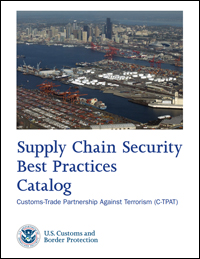 When looking for help in establishing and maintaining an effective supply chain security program, there’s no better starting point than U.S. Customs and Border Protection (CBP).
When looking for help in establishing and maintaining an effective supply chain security program, there’s no better starting point than U.S. Customs and Border Protection (CBP).
CBP established its Customs-Trade Partnership Against Terrorism (C-TPAT) security program in 2001 to develop measures that enhance global trade security, while at the same time enhancing trade efficiency. While it’s a difficult balance to maintain, the C-TPAT program has proven successful – more than 10,000 importers, carriers, brokers and more have become C-TPAT-certified partners since 2001.
The security principles behind C-TPAT can be considered best practices for any company involved in cross-border international trade. C-TPAT’s Supply Chain Security Specialists (SCSS) have identified five critical areas that companies should focus on when developing supply chain security processes:
- Exceeding C-TPAT security criteria
- Acquiring management support
- Developing written policies and procedures
- Employing a system of checks and balances
- Establishing measures that ensure continuity
To learn more about these best practices, how you can apply them to your business and how to reap their benefits, download U.S. CBP’s Supply Chain Security Best Practices Catalog today!
Click to download